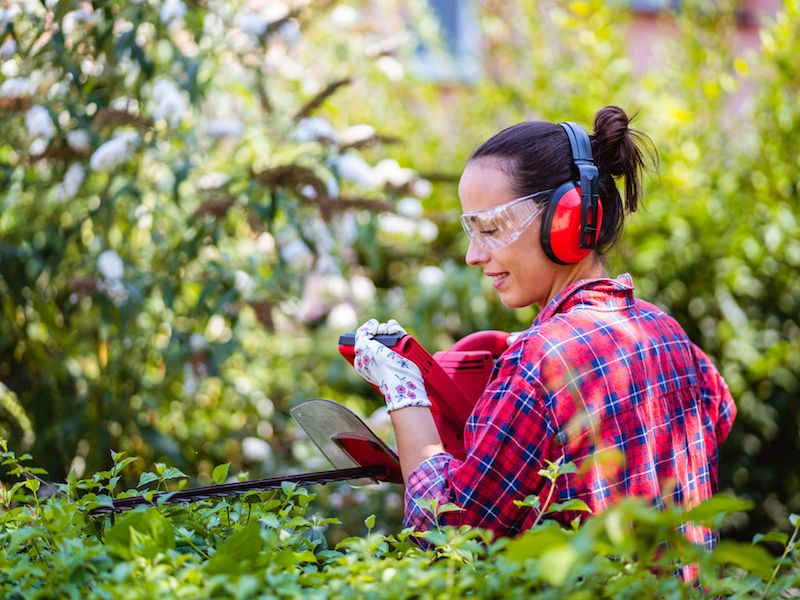
Protecting your hearing is similar to eating the right way. It sounds good, but not many of us have a very good concept of where to start. This is especially true if you don’t think your daily environment is especially noisy and there aren’t any noticeable dangers to your ears. But daily life can put stress on your ears and your senses, so practicing these hearing protection tips can help safeguard your auditory acuity.
The more you can do to slow the deterioration of your hearing, the longer you’ll be capable of enjoying the sounds around you.
Tip 1: Wearable Ear Protection
The most basic and practical way that you can safeguard your hearing is to protect your ears. This means that diminishing loud and damaging sound is a basic step you need to take.
For many people, this will mean using ear protection when it’s warranted. Hearing protection commonly comes in two basic forms:
- Ear Plugs, which are put in the ear canal.
- Ear Muffs, which are put over the ears.
Neither form of hearing protection is inherently better than the other. There are advantages to each type. What’s essential is that you get some hearing protection that you feel comfortable with.
Tip 2: Be Aware When Sound Becomes Harmful
But how do you know when to wear hearing protection? We’re used to linking harmful noise with painful noise. But the truth is that sounds can start to damage your ears at a much lower level than you might anticipate. After just a couple hours, for instance, the sounds of traffic are enough to damage your hearing. Knowing when sound becomes harmful, then, is a necessary step in protecting your hearing.
Typically sounds become harmful at the following thresholds:
- 95-100 dB: This is about the sound level you’d expect from farm equipment or the typical volume of your earbuds. This volume of noise becomes damaging after 15-20 minutes.
- Over 100 dB: Your ears can be very rapidly injured by this. Damage is done in about thirty seconds with noises above this limit. Jet engines and rock concerts, for example, can injure your hearing in around thirty seconds.
- 85 decibels (dB): This level of sound is dangerous after about two hours of exposure. This is the volume of sound you’d expect from a busy city street or your hairdryer.
Tip 3: Your Phone Can Be a Sound Meter
We can take steps to minimize our exposure, now that we have a concept of what volumes will be harmful. But in everyday life, it can be challenging trying to determine what is too loud and what isn’t.
That’s where your smartphone can become a handy little tool. There are dozens of apps for iPhone, Android, and everything in between that turn your device’s microphone into a sound meter.
Having a live sound meter with you will help you measure everything you’re hearing in decibels, so you’ll have a much better understanding of what hazardous levels really sound like in your daily life.
Tip 4: Be Mindful of Your Volume Settings
A smartphone with earbuds is usually the way people listen to music these days. Your hearing is put at risk with this combination. Over time, earbuds set to a sufficiently high level can cause considerable damage to your ears.
Somonitoring the volume control means protecting your hearing. In order to drown out sounds somewhere else, you should never raise the sound level. And we suggest using apps or settings to make sure that your volume never accidentally become dangerously high.
If your hearing begins to wane, earbuds can become something of a negative feedback loop; you could find yourself consistently raising the volume of your earbuds so that you can compensate for your declining hearing, doing more damage to your ears in the process.
Tip 5: Get Your Hearing Tested
You might think that getting a hearing exam is something you do only when your hearing begins to diminish. The issue is that it’s not always easy to detect a problem in your ears without a baseline to compare results to.
Acquiring data that can be used for both diagnostic applications and for treatment can best be accomplished by scheduling a hearing examination and screening. This will give you a little extra context for future hearing choices and ear protection.
Keep an Eye on Your Hearing
It would be ideal if you could constantly protect your hearing without any difficulty. But there are always going to be challenges. So anytime you can and as often as possible, protect your hearing. You should also get your ears tested regularly. Hopefully, these guidelines will help you get a good start.
